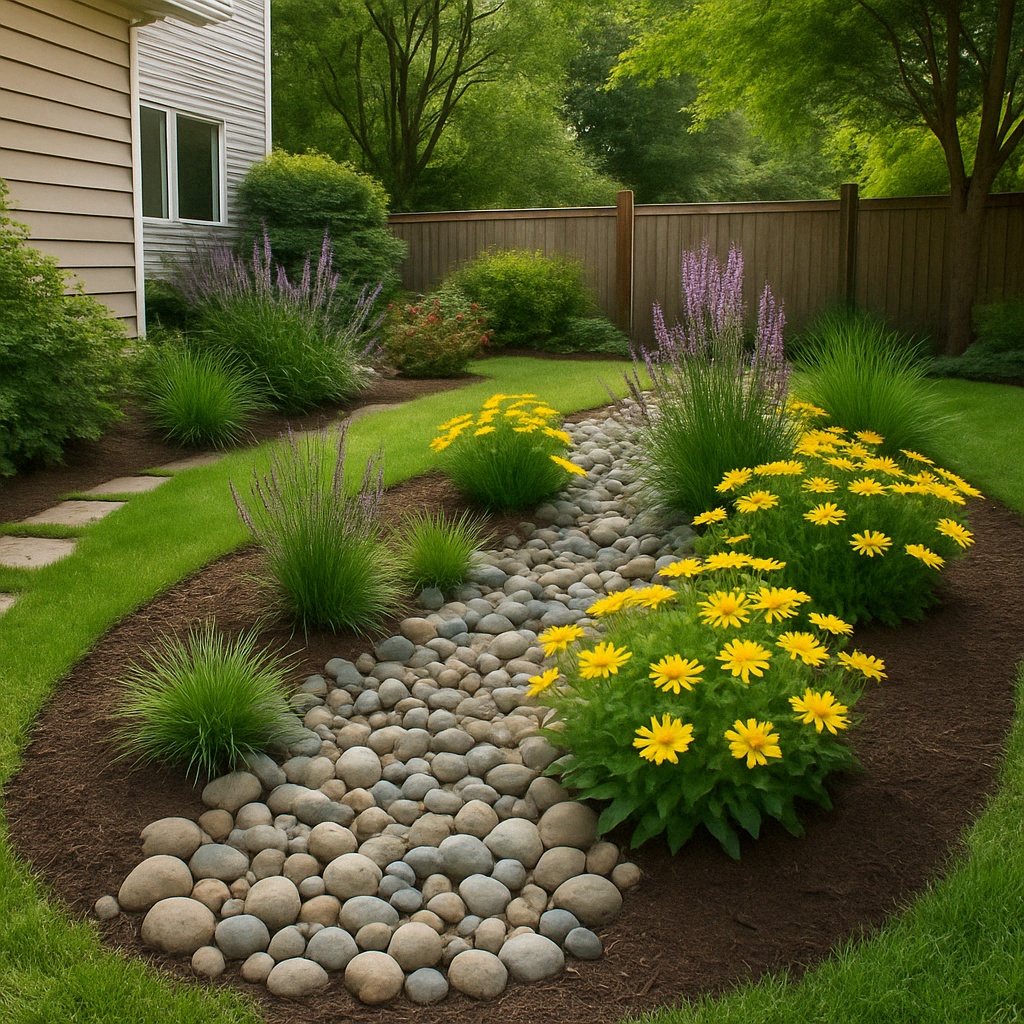Rain gardens are functional landscape features that help manage stormwater runoff by capturing it and filtering it through native plants and soil. In Bellevue’s rainy climate, they’re more than just trendy — they’re essential for protecting our watersheds, homes, and landscapes. Here’s how to design a beautiful, low-maintenance rain garden for your yard.

Why Bellevue Homes Benefit from Rain Gardens
- Stormwater management: They prevent runoff from pooling in unwanted areas and reduce the load on storm drains.
- Pollution control: By filtering water through soil and plants, rain gardens trap pollutants before they reach local waterways.
- Local support: Bellevue offers educational resources and occasional incentives for sustainable yard projects.
Planning Your Rain Garden
Start with a spot that naturally collects water — at least 10 feet from your home’s foundation and away from septic systems.
- Size: Ideally, your rain garden should be about 10–30% the size of the area draining into it.
- Soil test: Do a simple percolation test to ensure the soil drains well (1” per hour is ideal).
- Shape: Create a shallow bowl or oval with gently sloped sides for both safety and function.
Choosing Plants That Thrive
Native Pacific Northwest plants work best in a Bellevue rain garden. Look for species that tolerate both wet roots and dry spells:
- Water-tolerant base plants: Oregon iris, lady fern, swamp milkweed
- Dry edge plants: Red-flowering currant, snowberry, coastal strawberry
- Pollinator boosters: Sedges, rushes, and yarrow attract butterflies and beneficial insects
Building and Maintaining Your Rain Garden
- Excavation: Dig 6–12 inches deep, amending with sand and compost as needed
- Mulching: Use shredded bark or pine straw to suppress weeds and regulate moisture
- Maintenance: Check for sediment buildup, replenish mulch yearly, and prune as needed
Work with the Rain — Not Against It
Rain gardens are a smart way to handle Bellevue’s wet weather while enhancing your yard’s curb appeal. They’re low-maintenance, high-impact, and a perfect DIY weekend project for spring.
Want more tips? Explore our Spring Gardening Tips for Bellevue Homeowners or browse our April Vegetable Guide.

